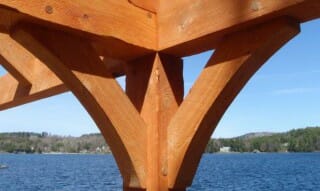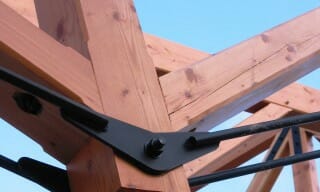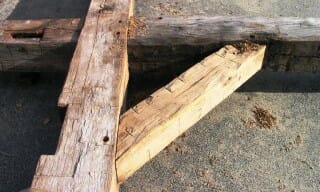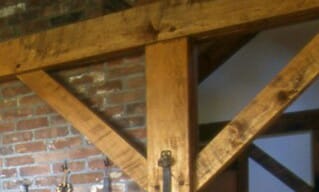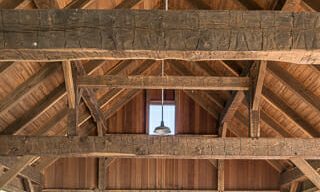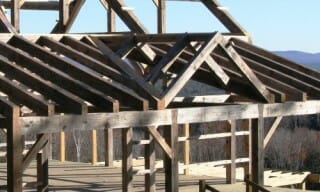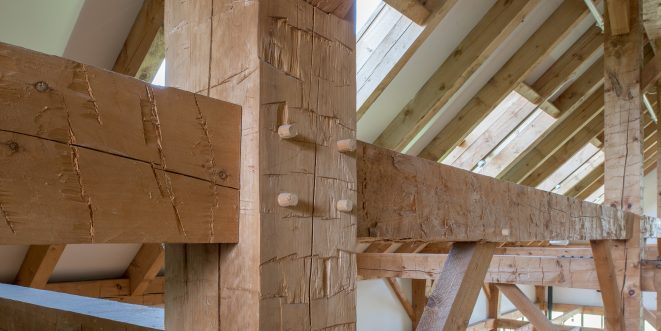
Wood Textures
What wood textures are available for a Timber Frame? There are a variety of ways to texture wood including planed, rough sawn, hand hewn and more. At Vermont Timber Works, choosing the texture and finish for your wood is part of the customization process. The finish of the wood will determine the overall look and feel of the frame whether its in a Barn or a Home, as well as influence the look of any stains you might choose as well. Below, are examples of different types of timber textures Vermont Timber Works can help you create for your project.
Rough sawn beams are just as they come out of the sawmill. Their texture depends on the type of mill. A circular saw mill will give round blade marks to the timbers, while a band saw mill will have straight, slightly smoother marks.
Planed smooth timbers are S4S (surfaced four sides) and are smooth to the touch. We often give their edges a 1/2″ chamfer (bevel) to dress them up.
Rough hewn antique timber is reclaimed from old mill buildings and barns. It is very beautiful, but also very expensive to buy and time consuming to properly fit, so it is the most expensive option.
Semi-sanded timbers come from the mill rough sawn, then we sand them a bit to take the fuzzy texture off while leaving a bit of character on the surface. They take stain beautifully and end up looking antique and distressed. There is extra labor involved, so the cost is higher than S4S or rough sawn.
Weathered wood beams look great and are an inexpensive way to achieve an antique look. All we need is a few months of extra time. We buy the timbers rough sawn, then spread them out in the field behind our shop. We roll them once every couple of days and let nature do its work. In a couple of months the beams take on the silver patina of old barn boards and are ready to be made into a beautiful new timber frame that looks old.
There are multiple types of timber that can be used to create a frame. Each species has its own characteristics, and some species are better suited for certain frame types. Our Wood Species & Finishes page is dedicated to informing you about timber species as they relate to the construction of your frame or truss.
Timber is a natural product so natural variations in grain, color, and checking, are to be expected. Knots of various sizes are also to be expected. Shake is a timber defect. It occurs around the growth rings of a timber and is often found in older trees that grow in wet areas. Checking is cracking that develops along the radius of a log.
